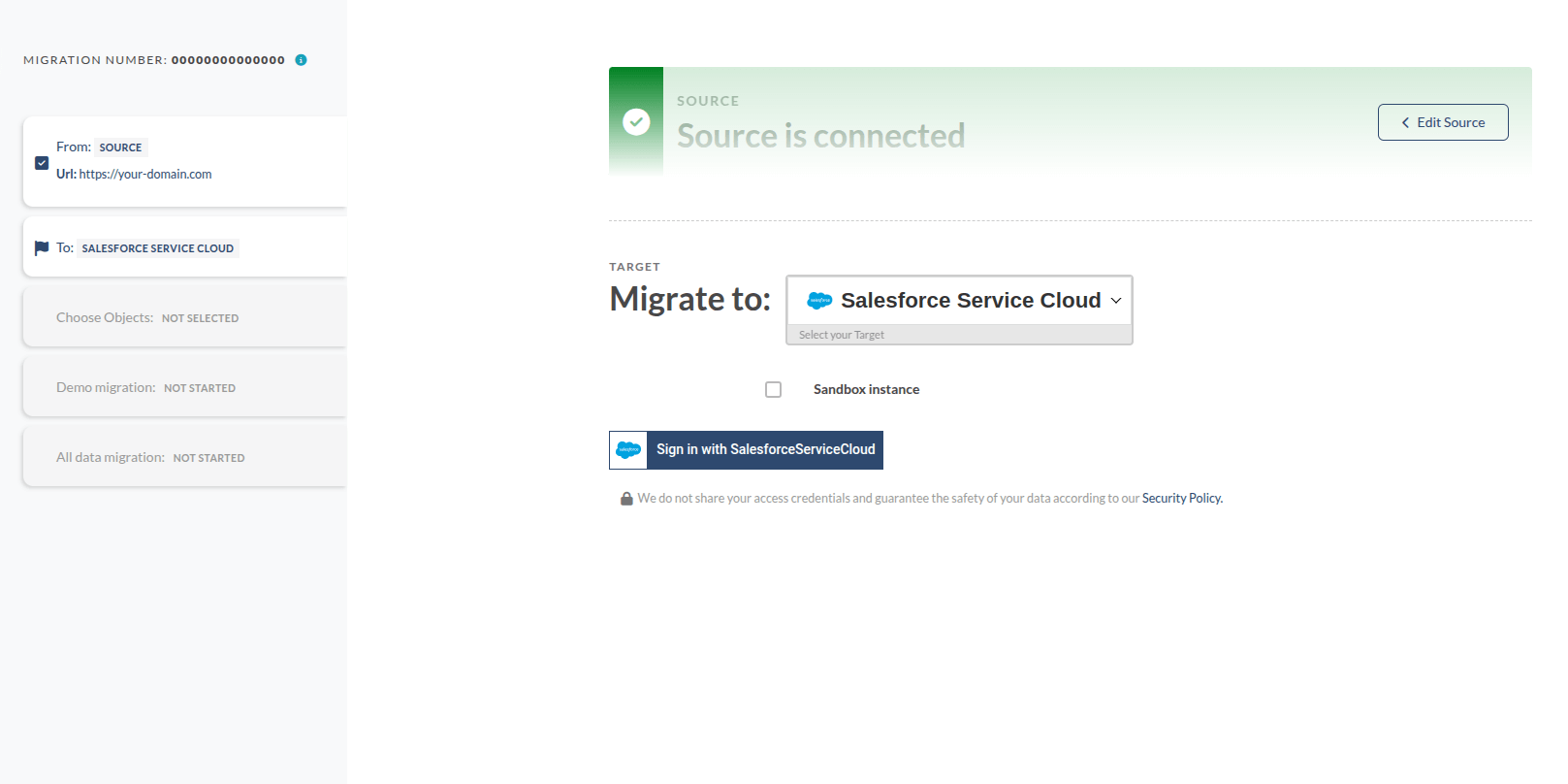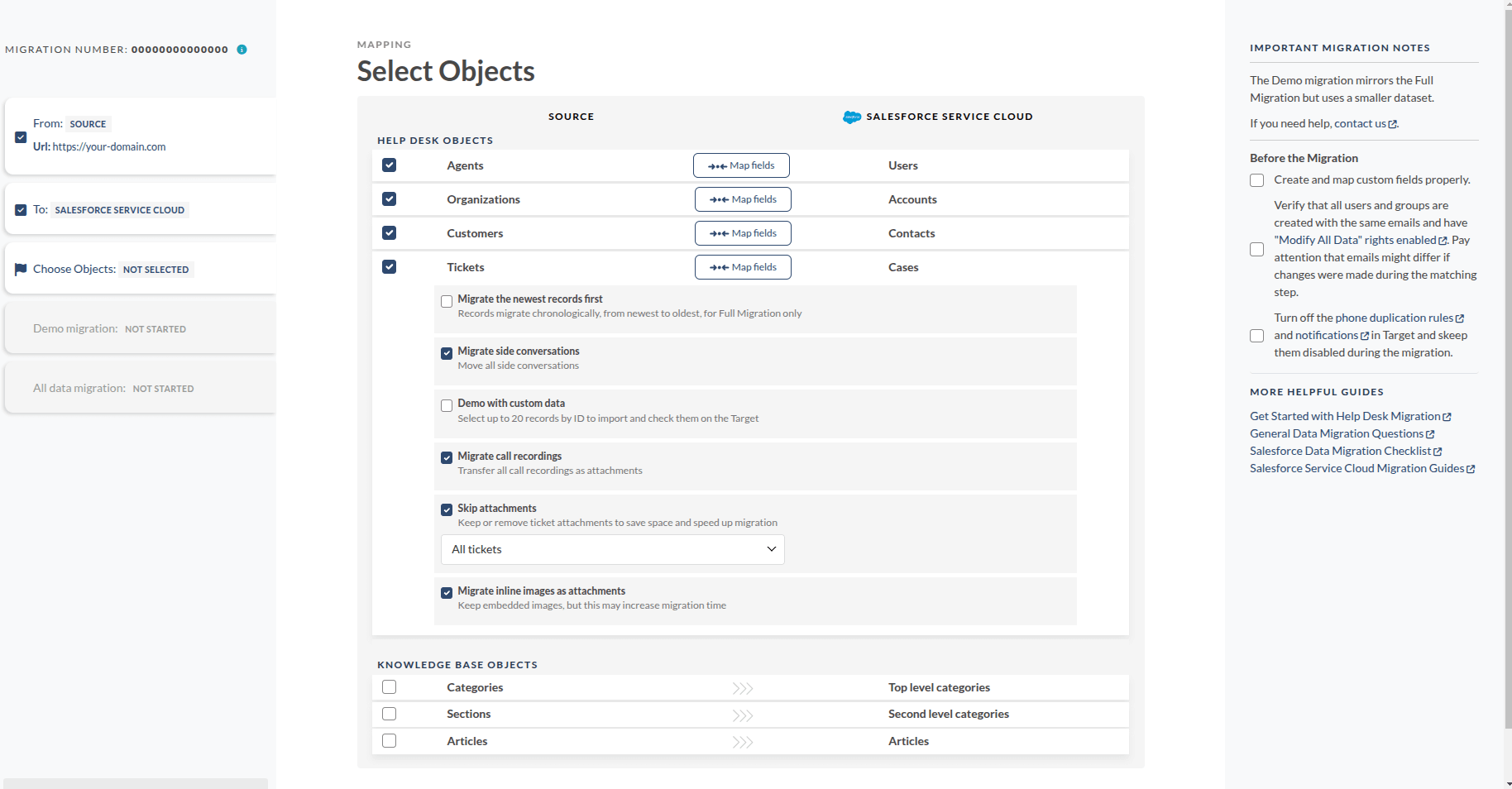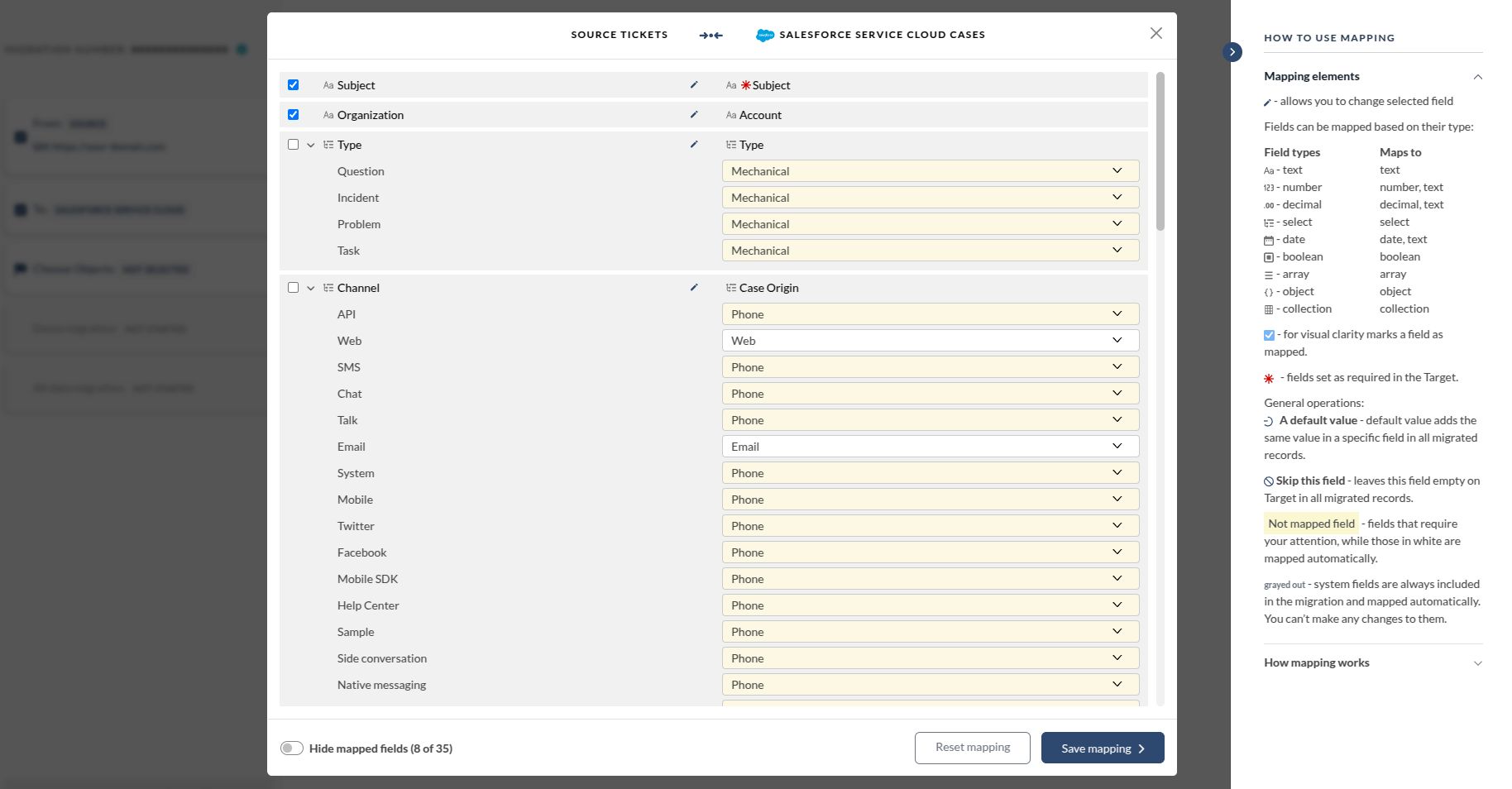Data migration is an essential part of today’s business world. As companies grow and evolve, moving data between platforms has become more common. With so many options available, businesses are constantly searching for the right solutions to meet their needs. Salesforce, known for its powerful tools to manage customer relationships, is a popular choice. If you’re using Salesforce and considering a migration, you’re in the right place.
The Struggles of Finding the Right Migration Plan
But migrating to Salesforce isn’t always straightforward. With countless strategies, methods, and opinions out there, finding the right plan can feel overwhelming. As a business owner, you want to make sure you pick the best option to minimize disruptions while boosting efficiency. The reality? Finding the perfect plan takes time—a resource you probably don’t have much of.
What’s a Migration Plan, Anyway?
So, what exactly is a migration plan? Think of it as your step-by-step guide to a smooth Salesforce migration plan. It’s a clear checklist that covers everything you need to do during the process, ensuring you stay on track and avoid any pitfalls. In short, it’s your roadmap to a seamless transition.
Why Every Migration Plan Is Different
It’s key to understand that every migration plan is unique. Your business, with its own support systems, data needs, and goals, requires a tailored approach. That’s why we’ve put together a universal, customizable Salesforce migration plan. It’s designed to help you complete your migration quickly and with minimal effort.
Let’s Get You Migrating
Ready to make your move to Salesforce? Let’s walk through the steps to ensure a successful data migration. We’re here to help you simplify the process, so you can focus on what matters most—growing your business.
Prep Work: Setting the Stage for a Smooth Migration
Data migration can seem like a daunting task, but with the right preparation, you can ensure a seamless transition. One of the most crucial steps is to follow best practices, and that starts with creating a thorough checklist. Being prepared means fewer surprises down the road, saving you time, money, and frustration. In this guide, we’ll walk you through the key pre-migration tasks to set you up for a successful Salesforce data migration.
Before you get into the nitty-gritty of transferring data, it’s essential to establish a clear data migration strategy. Think of this as your blueprint—it’s the plan that will guide you through every stage of the migration process. A solid project plan will outline how to import your data, configure system settings, and ensure nothing falls through the cracks.
Here are the key components to include in your strategy:
- Data Transfer Process: Determine how you’ll transfer data. This includes selecting which records to migrate, mapping fields between systems, and defining the configuration settings that will be needed.
- Potential Risks: Identify any risks that could cause hiccups in the migration—think server issues, data corruption, or connectivity failures. It's important to acknowledge these potential challenges upfront and plan how to handle them.
- Mitigation Strategies: Outline measures to prevent or address these risks. You might choose to schedule the migration during off-peak hours to minimize disruptions or set up redundancy plans to protect against data loss.
This step is critical—it sets the stage for a successful migration. A well-documented migration plan will not only guide you through this process, but it’ll also be a valuable reference for future migrations. Record any issues you encounter, along with solutions, so you can improve your process next time.
Clean and Organize Your Data
Once your strategy is in place, it’s time to prep your data. Go through your Salesforce data and decide what you actually need to migrate. Essential records might include:
- Tickets
- Users
- Client databases
- Page layouts
- Attachments
- Custom fields
At the same time, clean up your data by filtering out unnecessary records—it’s a part of your Salesforce migration plan. Remove outdated, empty, or duplicate entries to streamline the migration process. This will save you time and money by ensuring you’re only transferring the relevant information.
Also, take the time to delete irrelevant workflows or incorrect entries. Doing this upfront will make your migration process smoother and your new system more organized.
Prepare Your Platforms
With your data cleaned and ready, it’s time to get your platforms prepped for the Salesforce migration. In your new system, make sure you’ve replicated custom fields, agent profiles, and any necessary configurations to match your current Salesforce setup. This is crucial for ensuring that data mapping goes smoothly.
Before you start migrating, turn off all notifications and automations in your current system. This will prevent Delta Transfers, which happen when updates are made to the old system during migration, potentially causing inconsistencies in the new system. Disabling these features temporarily will help keep the migration on track.
If you have any validation rules set up in Salesforce, review them to make sure they align with the target platform. If needed, deactivate them during the migration to avoid any data integrity issues.
Notify Your Team & Customers
Clear communication is key to a successful migration. Start by informing your team about the upcoming changes. Set a “blackout” date for the migration and make sure everyone is on the same page. This gives your staff time to close tickets and wrap up tasks before the migration begins. Share the Salesforce data migration plan with your team so they know what to expect.
Don’t forget to notify your customers. Post an announcement on your website so they’re aware of the migration and any potential service interruptions. Keeping both staff and customers informed will help manage expectations and reduce frustration during the transition.
Migration Work: The Heart of the Process
When it comes to migrating your Salesforce data, this is where the real work happens. There are three main ways to get your data from one system to another: manually, through the Salesforce API, or by using a professional data migration tool. Let’s break down the pros and cons of each option.
Manual Data Migration: Slow and Risky
The first method is manual migration, which involves copying and pasting data from one platform to another. While this is technically free, it comes with several significant drawbacks:
- Time-consuming: Manually transferring data entry by entry is incredibly slow, especially if you’re dealing with a large amount of data.
- Risk of Errors: It’s easy to make mistakes with this method, whether it’s mapping the wrong fields or missing critical records.
- Requires Basic Knowledge: You need to understand basic data migration principles to avoid common pitfalls.
While this method might sound tempting due to its zero cost, it’s labor-intensive, error-prone, and not the most efficient approach for a successful migration.
Salesforce API Migration: Technical but Costly
Another option is to use the Salesforce API to carry out the migration. The API allows you to integrate third-party tools within the Salesforce platform, enabling automatic data transfer. However, this option comes with its own challenges:
- Complexity: The API can be complicated to set up and manage, requiring a solid understanding of technical systems.
- Consulting Costs: If you don’t have in-house technical expertise, you’ll likely need to hire someone to handle the API, which can get expensive.
- Risk of Incomplete Migrations: While automated, API migrations can still encounter issues with data mapping or system configuration.
If you have technical resources on hand, this can be a viable option, but it’s not always the most cost-effective or straightforward choice.
Professional Data Migration Tools: Fast, Safe, and Simple
The most efficient and secure method for migrating Salesforce data is to use a professional data migration tool. This option beats the previous two methods in several ways:
- Speed: Automated tools handle the entire migration process, meaning you don’t have to spend time manually transferring records.
- Security: These tools ensure that your data is transferred securely, minimizing the risk of loss, corruption, or incorrect mapping.
- No Technical Expertise Needed: With a user-friendly interface, you don’t need to be a technical expert to migrate your data successfully.
At Help Desk Migration, we’ve built a Migration Wizard that simplifies the process and ensures a smooth, efficient migration. Here’s how it works:
1. Select Your Platforms: First, choose your source and target platforms and provide the necessary credentials for both. Our tool will securely connect both systems.

2. Map Your Data: Once connected, you’ll be prompted to map your data.

You’ll select which records you want to migrate and how they should be mapped to the new system. Don’t worry—our tool will guide you through the process.

3. Run a Demo Migration: Before you migrate everything, we strongly recommend running a demo migration. This quick, free test will copy a small portion of your data to ensure everything works smoothly. It’s a great way to catch any potential issues before you go live.

4. Full Data Migration: After you’re satisfied with the demo migration, you can proceed with the full data transfer. Depending on how much data you're moving, this typically takes a business day or more. If you have a lot of records, it might take a bit longer, but it’s always efficient.
5.Verify Your Data: After the full migration, double-check your data to make sure everything has transferred correctly. This step ensures there are no mismatches or lost information.
Why Choose Help Desk Migration Tool?
Every data migration tool has its pros and cons, and ours is no different. But what sets us apart is our experience. We’ve been around for years, and our tools are trusted by many businesses. We’re constantly improving them to make sure your experience is as easy and seamless as possible.
Years of Experience You Can Count On
We’ve been perfecting our tools for years, which means we’re equipped to handle your migration needs with confidence. We know the challenges businesses face, and we’ve solved them time and time again. With us, you’ll have a smooth, reliable experience from start to finish.
Constantly Expanding Platform Support
We know businesses use a variety of tools, and that’s why we’re always adding new platforms to the list of supported systems. We want to make sure we’re ready to help you, no matter what tools you’re working with.
Simple, Transparent Pricing
We believe in honest pricing. We don’t charge for the work—just for the records you move. There are no hidden fees or surprises along the way. This makes our solution more affordable and faster than hiring a developer to build a custom solution from scratch.
Support When You Need It
Data migration can be tricky, but you won’t be going through it alone. Our support team is here to help, every step of the way. Whether you run into a bug or an issue, we’re here to help you fix it quickly and easily. We’ve helped hundreds of businesses with their migrations, so we know what it takes to get things done right.
Why We’re the Right Choice for You:
- Experience: Years of refining our tools to ensure a smooth migration.
- Platform Support: We’re constantly adding new platforms to help meet your needs.
- Transparent Pricing: You only pay for the records you move—no hidden fees.
- Dedicated Support: Our expert team is here to assist you throughout the process.
With our solution, your migration will be easy, cost-effective, and secure. Let us handle the heavy lifting so you can focus on growing your business.
Let’s Migrate Together
Ready to migrate your data to or from Salesforce? We’ve got you covered. Our system ensures a smooth, fast, and affordable migration, so you don’t have to worry about any disruptions in your workflow. Whether you’re moving customer records, tickets, or custom data, we make sure your information stays intact, secure, and accurate. No mixed-up records, no data corruption, and no broken links.
Why Choose Us?
We know that data migration can feel overwhelming, but with us, you can trust that the process will be handled professionally from start to finish. Our tool is designed to be reliable and efficient, so you won’t have to spend unnecessary time fixing issues that arise after the migration.
Have Questions?
If you still have questions, or if there’s anything we haven’t covered yet, we’re here to help. Our support team is always just a message away, ready to assist you with any part of your Salesforce migration. Whether you need technical advice or have a specific concern, we’re dedicated to providing you with the information and support you need.
Wrapping Up
We hope this Salesforce migration guide has helped clarify the steps and benefits of migrating your data. But remember, our team is always ready to answer any lingering questions. Don’t hesitate to reach out—we’re here to help you at every stage of your migration journey.



